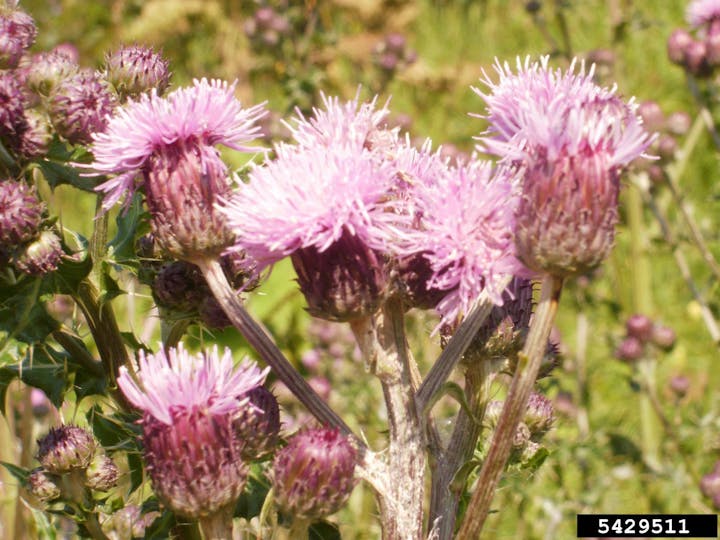The Dirt | What to do about tansy?
Tansy ragwort (Jacobaea vulgaris) questions are keeping us busy here at Benton SWCD. This noxious weed is having a great year (for it, not for us) and we want to share some thoughts on how to manage it.
Typically we depend on insects to help us manage tansy ragwort. In Oregon there are at least 3 insect pests that eat different parts of the plant, and they’re highly effective at diminishing populations. These insects, which we refer to as biocontrols, were intentionally released in Oregon after thorough testing to make sure they didn’t damage important agricultural crops or native vegetation. The most well-known biocontrol for tansy is the Cinnabar moth, or more specifically, its caterpillars. A few Cinnabar caterpillars can munch down an entire tansy plant in a matter of days, before it ever has the chance to flower or make seeds.
Every few years, we find that the insects have done so well in reducing the prevalence of their host plant, that they themselves crash in population. Less available tansy = less caterpillars. Once the caterpillars decline, the host plant then rebounds. That's likely one reason we have so much tansy in Benton County right now. Also, it seems that we’ve had optimal weather conditions for tansy ragwort locally.
At Benton SWCD, our resources to treat weeds ourselves is very limited, so we focus our efforts on educating the public about noxious weeds and how to control them. Our recommendations on tansy are to control it aggressively if you have livestock or if you sell hay or other livestock forage from your farm. Tansy is toxic to livestock. If you have tansy in bloom right now near a livestock operation, we’d encourage you to cut it or pull it so that it doesn’t go to seed. It’s too late in the season to wait for the biocontrol to move in to prevent it from seeding.
Unfortunately, with limited time, we all have to prioritize. In areas away from livestock, controlling tansy is a bit less of a priority, so don’t be surprised if you see some land managers focusing their efforts on other things. While it’s always good to remove noxious weeds, populations of tansy will likely be controlled by biocontrol insects in the next year or two.
Read more about tansy ragwort in this ODA PDFDo you have questions or concerns about invasive weeds? Contact Michael below.

.png?ixlib=rb-1.1.0&w=2000&h=2000&fit=max&or=0&s=e520f9fd171ed44271f9f241919eed7c)




